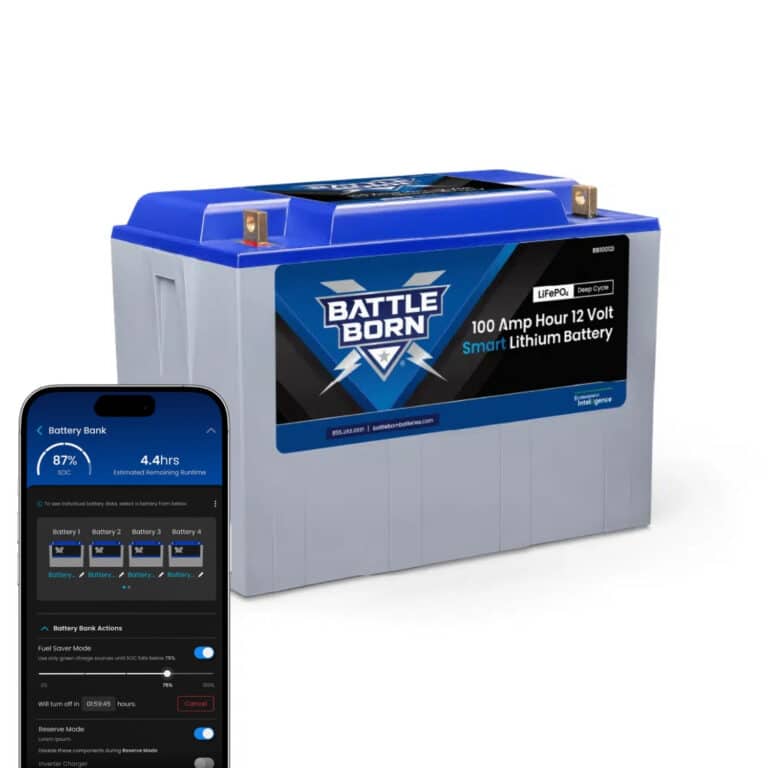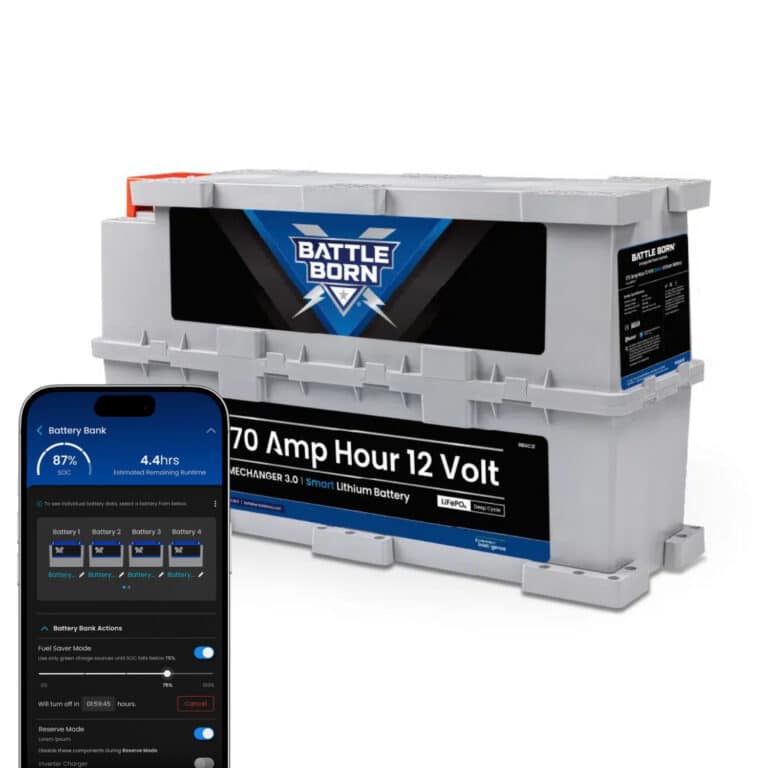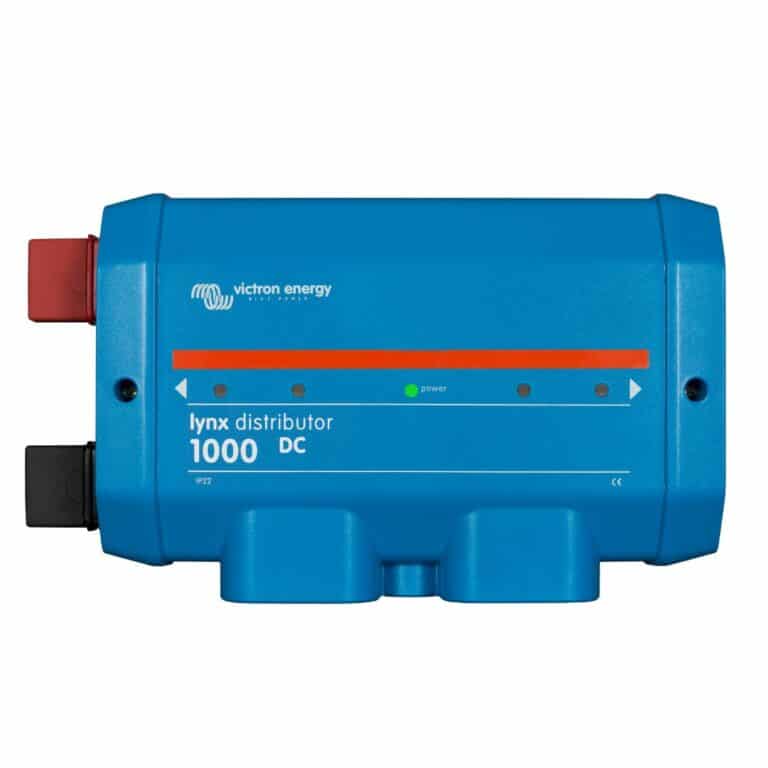
MENUMENU
TALK TO AN EXPERT
Special Hours: 7AM – 6PM PST
TALK TO AN EXPERT
Special Hours: 7AM – 6PM PST
While electric trolling motors work with almost any type of deep-cycle marine battery, not all batteries offer equal efficiency. Lithium-ion (LiFePO4) batteries are all the hype. Not only do they double or triple the run time, but they also have the longest lifespan compared to other marine batteries.
What’s more, a LiFePO4 trolling motor battery ensures you get the most out of your time on the water in any season. But is the higher price tag really worth it?
In this article, we uncover the importance of choosing the right marine battery for your fishing expeditions—from performance and safety to cost.

When purchasing marine batteries, it’s important to make an informed decision. Selecting the right battery will ensure optimal performance. More importantly, you’ll prevent damage and minimize the risk of accidents that comes with incompatible batteries.
Boating enthusiasts know the importance of reliable and long-lasting battery power out on the water. Most batteries are designed for starting applications, where a short burst of power is important. But not all batteries are ideal for the longer-duration draws of trolling motors.
When looking for a trolling motor battery, limit your search to those designed for deep-cycle use. Some of the most common marine battery types are lead acid, AGM, gel cell, and lithium-ion batteries. There are advantages and disadvantages to each.
Flooded lead acid (FLA) batteries are some of the oldest battery types and require periodic watering in just the right amounts to keep them healthy. But these batteries have one major downfall: they’re heavy.
Depending on the power you need, you’ll likely want two or three units. At around 80 lbs each, these bulky components essentially add the weight of an extra passenger to your ride. They’re also the slowest-charging batteries on the market.
A lead acid marine battery comes with a great price tag, but you’ll have to replace it in two to four years. By contrast, a more expensive lithium-ion battery only needs replacing at around 10 years.
There are different types of lead acid batteries, with AGM and gel cell batteries offering some improvements.
Absorbed glass mat (AGM) batteries have a slightly more advanced design, which enhances both their discharge and recharge efficiency.
AGM batteries have a longer life than FLA batteries. They also offer quick starting power and the reliable, deep-cycle capacity needed for trolling. However, they’re more expensive than FLA batteries and significantly heavier than lithium-ion batteries, with a low capacity-to-size ratio.
Although also a lead acid battery, gel cell models have a sealed, valve-regulated design. This makes them spill-proof, submersible, leak-proof, and relatively safe. They also perform well in very deep cycle applications.
They are, however, very fussy when it comes to battery chargers. Applying incorrect, incompatible, or over-voltage charging leads to poor performance and premature failure. They’re also not a good choice for very cold temperatures.
Lithium boat batteries have a completely different kind of chemistry than lead acid batteries. The lithium-iron phosphate combination offers more advantages than any other battery type.
For instance, they’re significantly lighter, allowing you to shed up to 70% battery weight off the boat. Lithium marine batteries are also safer—they last long, charge fast, won’t leak, and don’t require maintenance.
In addition, they provide the same output at 50% charge as they do at 100% charge. That means your trolling motor will work equally well at the beginning and end of the day.
Matching the voltage of your trolling motor and marine battery is essential for the optimal performance and longevity of both the motor and the battery. Poor voltage matching can reduce the lifespan of all batteries, just like an uneven tire tread will reduce the life of all four tires.
If the voltage doesn’t match, the trolling motor won’t operate at maximum efficiency. This can decrease battery life, lower overall performance, and damage both the motor and battery. Mismatching the voltage can also lead to overheating and potentially dangerous situations.
Electric trolling motors are generally available in 12V, 24V, and 36V models. The higher the voltage, the better the power and longer the run time. However, higher voltage units are also heavier and more expensive.
Marine battery size is critical for powering various appliances and electronics on board. A larger battery size can provide longer battery life and more power for running a wide range of devices, from lights and radios to GPS systems.
However, a larger battery size also means more weight and space needed on the boat. By contrast, less weight offers more maneuverability, easier charging, and more speed. It’s especially important to find the right balance between battery size and available space for optimal performance.

Ampere-hours (Ah) indicates battery capacity and determines how long the battery can keep your trolling motor going. A larger-capacity battery offers more power, which means you can troll for longer periods.
For instance, a lead-acid battery can only provide half its capacity to a trolling motor before voltage output dips too low. On the other hand, a lithium marine battery maintains a fairly consistent voltage. This enables you to get maximum capacity out of your battery life.
Choose a battery for your trolling motor based on how long you plan to use it and the amount of power you need.
Incompatible charging systems can affect battery life and motor performance. They can also damage the unit, causing the battery to shut down or fail to charge. This will shorten the overall battery life.
Compatible charging systems improve the overall performance of the trolling motor and enhance the run time. So, ensure you use a charger that matches your marine battery chemistry and voltage.
There are many things to consider when it comes to choosing the best marine battery for your vessel, and lithium batteries remain a popular choice for a good reason.
At Battle Born Batteries, we harness the power of LiFePO4 to bring the most stable, efficient, powerful, no-maintenance lithium-ion marine battery to the market.
Our extended-life lithium-ion batteries also come with dedicated technical support. Contact us today and start enjoying trouble-free days on the water.

Shop Best Sellers








Ask a technical specialist now at 855.292.2831
Stay in the Know
One thought on “Important Marine Battery Specs for a Trolling Motor: What You Should Know”
I just purchased a Lifepo4 lithium battery for my trolling motor. What amp charger should I purchase for charging this battery. Thanks Adrian McClellan